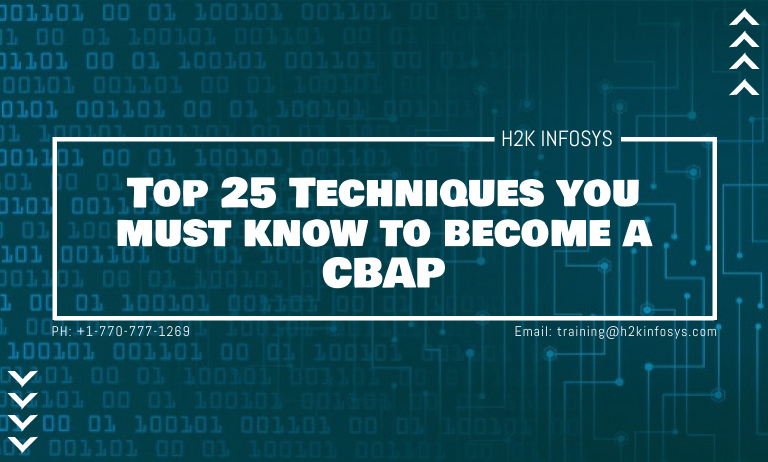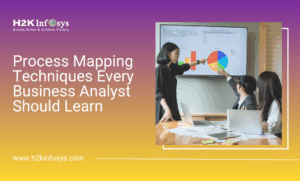The world is in a phase where people work and earn in different fields outside their background study. One of the fastest-growing fields in the system today is Business Analysis. The growing competition in businesses and companies has introduced some aspects of technology to the area. The primary duty of a business analyst is to combine research and implement policies to maximize profit and drive sales.
While the field is increasing, many are switching into the field as it is one with many opportunities. However, there are some criteria before the individual gets the business analysis certification. A certified business analysis professional has enrolled in courses that give them training, some through online courses, others in physical classes. As potential business analysts, there are tons of courses to launch you into the field. Asides from this, there are other techniques you must know to become a Certified Business Analysis Professional. In this article, you get to know the Top 25 techniques to help you succeed as a certified business Analysis Professional. Here you go.
1. Workshops
There are some specific workshops a potential business analyst has to be vast in. for example, the Joint Application Design session. This workshop is always attended by major stakeholders, small and medium-scale enterprises for a stipulated time.
2. Prototyping
This is another important technique for the business analyst. Prototyping is one technique that exposes the analyst to identifying, validating, and changing the interface for profit maximization. This can also help them design new business rules and policies awaiting implementation.
3. Business Capability Analysis
Business Capability Analysis gives the analyst a graphical illustration of the business capabilities. This leads the business to transform some models to achieve a goal.
4. Decision Analysis
Decision Analysis is a crucial technique in business analysis. It helps examine and formulates methods and models that analyze business decisions and future outcomes of these decisions.
5.Financial Analysis
Financial analysis is another technique in business analysis. As a business analyst, you must have the skills to weigh economic decisions, whether to the loss or profit side.
6. Risk analysis and Management
Taking risks has become an essential part of human existence. Also, it is necessary for the business as it helps examine the impact of decisions implemented. After analysis, the product will show the trend and lead to discussions to continue or abrupt.
7. Data Dictionary
Like a regular dictionary, a data dictionary shows all the critical words for incorporation in the data and business world.
8. Data Flow Diagrams
A significant part of the business analysis niche involves drawing diagrams and graphs to interpret the outcome of events. The Data Flow Diagram is divided into two parts; Graphical Model and Highest Level Diagram.
9. Sequence Diagrams
Just as it sounds, the sequence diagram shows the series of events before, during, and after a project’s execution. Sequence diagrams are also known as Event Diagrams.
10. User Story
A user story is a piece of detailed information about a particular client or business. It is vital because it has all the action plans, objectives, and goals the industry seeks.
11. Metrics and Key Performance Indicators (KPIs)
KPIs are common to businesses. The KPI of a company is an outline of the progress the industry is making. It shows the efficiency of the company on their growth and methods to achieve the goals.
12. Process Analysis
Process Analysis is a technique that the business analyst uses to show the processes and effectiveness of their objectives. In this regard, it can be similar to KPIs.
13. Concept Modelling
The concept modeling is a glossary of the concept and vocabulary the business uses.
14. Business Model Canvas
The business model canvas shows the complete process on methods a company wishes to supply services. The business model canvas has nine building models to showcase the techniques. They are a crucial partnership, essential resources, customer relationship, channels, revenue streams, customer segments, key activities, value proposition, and cost structure.
15. Business Rules Analysis
The business rules analysis shows the business rules and enhances the strict adherence to these rules. A business draws out regulations specific to its objectives and goals.
16. Benchmarking and Market Analysis
Benchmarking and Market Analysis are vital in measuring the competitors’ and governments’ methods and models, while market analysis shows the various needs and wants of the competitors in the market.
17. Collaborative Games
This is a technique that introduces fun into the business analysis field. Collaborative games allow the use of fun activities like games to develop solutions to a particular problem.
18. Scope Modelling
Scope analysis gives a definite outline for the scope of a business. The scope can be for a solution to the problem the company is trying to solve.
19. Interface Analysis
The interface analysis is selecting and linking the connection between the interface of solutions or components.
20. Estimation
Estimation is probably the first step of business analysis. Before the inception of a business, the cost of production has to be estimated. This gives the company a sense of direction on the financial race.
21. Balanced Scorecard
A balanced scorecard is a modern method introduced into business analysis to measure and monitor financial measures for the organization’s growth and objectives.
22. Business Cases
Business cases provide details of the business. It gives the projected value of the company with the cost. Although very important, it doesn’t offer the complete information needed for the business.
23. User Cases and Scenarios
User cases and scenarios are related to user stories. These explain the interaction of businesses in the system to accomplish a goal.
24. Vendor Assessment
Vendor Assessment is evaluating a prospective vendor to give the requirements for delivery and offering of services to the market.
25. Decision Modelling
This gives the outline of how concurrent business decisions and how the incorporation of data and knowledge is allowed in the technique.
Let’s Wrap it Up
The field of business analysis is exciting and broad as well. Becoming a certified business analyst professional is one fearful field for many individuals; however, with the necessary techniques, this will become very simple. To ascertain the level of preparedness, there are certified business analysis mock exams to help you. This certified business analysis mock exam exposes you to the examination atmosphere and the vital areas of concentration. After the business analysis certification, there are lots of opportunities to be explored. Being a certified business analysis professional may be the next step to launch you into greatness.





























